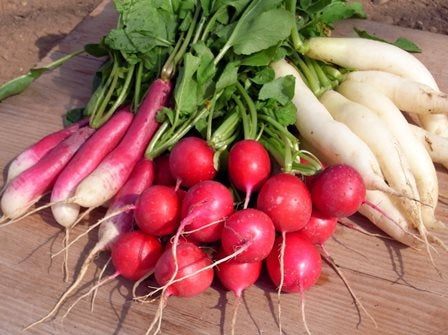RADISH MIX - ra50
Have a question?

RADISH MIX - ra50
Dettagli
Species: Raphanus sativus L.
Family: Brassicaceae – Cruciferae
Brief history and botanical notes on the plant
Radish or radish (Raphanus sativus L.) is a herbaceous plant belonging to the Brassicaceae family, cultivated for its enlarged hypocotyl, commonly called root, with a more or less spicy flavor and spicy consistency.
The aerial part has lobed leaves with an irregularly serrated margin. The flowers, equipped with four petals, are white, pink or violet; the fruit is The fruit is a silique that contains reddish, round or slightly elongated seeds.
Environmental needs
It prefers loose soil well endowed with organic substance.
Radish cultivation takes advantage of medium-textured soils that tend to be calcareous, irrigated and equipped with organic substance.
Crop rotation is an essential practice for growing radish; if in main cultivation it is to be considered for renewal, if in small intercrop areas. Rotations with other cruciferous vegetables are not recommended.
Variety
The cultivated varieties are numerous and are classified based on the shape and color of the root or the cultivation season. The most common varieties in Italy for round and red radishes are Cherry Belle and Saxa, for white and oblong ones Candela di Ghiaccio, while for red and oblong radishes Candela di Fuoco, Ravanello Lungo or Torino or Tabasso.
Cultivation technique
The cultivation cycle lasts from a minimum of three weeks, in the summer period, to a maximum of 2-3 months during the winter.
From 4 to 8 kg/ha of seed are used with manual sowing on worked soil in order to obtain a fine sowing surface; and from 2 to 3 kg/ha with mechanical sowing of
precision, with superficial distribution (1-2 cm depth). The distance between the rows is 10-15 cm, and 3-4 cm on the row.
It needs frequent watering.
Collection, production and conservation
Production per hectare is approximately 30 quintals. Radish is marketed packaged in bunches, ready for consumption, with leaves, or, more rarely, in bags, without leaves.
Adversity and parasites
The most harmful parasite is the cabbage moth (Phyllotreta spp.) which damages the leaves both in the larval and adult stages.
Associations
Being an undemanding and very rapid crop, it adapts to being inserted into the vegetable garden without particular problems, it is associated with peas, carrots, beans, cabbage and lettuce.
Biodynamics
Very useful are treatments with preparation 500, nettle macerate as a prevention for altica attacks. Horsetail decoction as a rust prevention.



